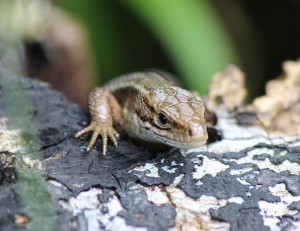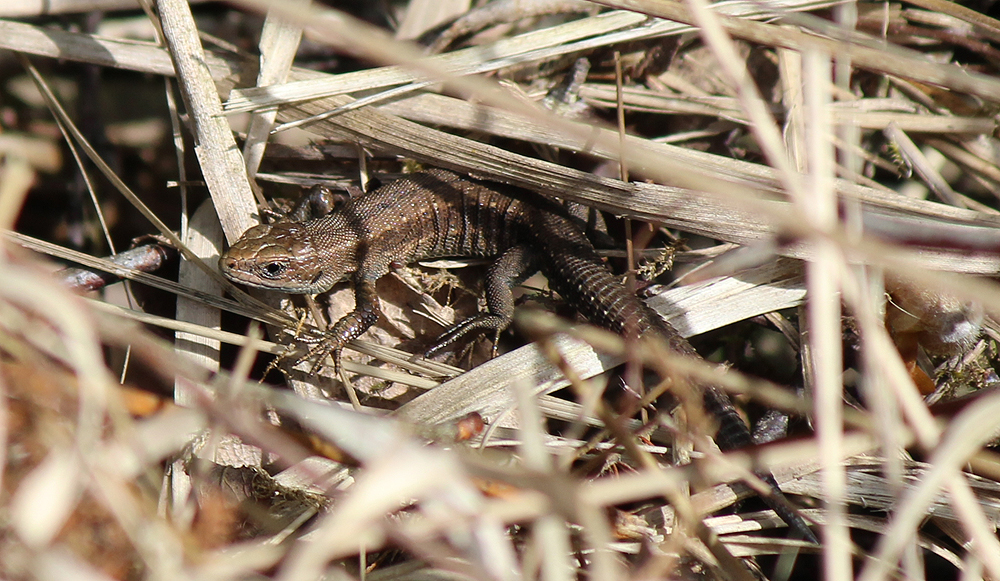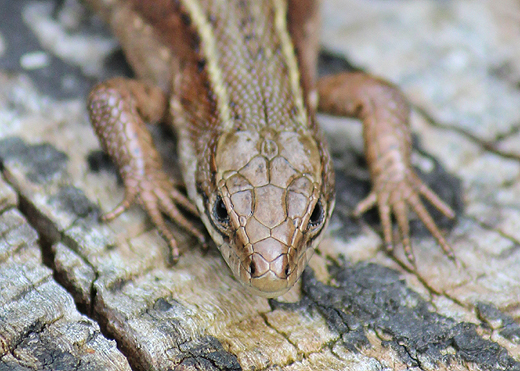

Few realise that you can see common lizards in the Chilterns. Yet there are isolated colonies still to be found in patches of unimproved chalk grassland.
The common lizard, zootoca vivipara, has relatively few requirements. A rotting pile of logs where it can hide and hibernate from October to March makes the perfect home.
You may see one basking on a log. Lizards, like all reptiles, are cold blooded and must raise their body temperature to around thirty degrees before they can hunt. They live on insects and worms, shaking their prey before swallowing it whole.
Lizards mate in spring and this far north, give birth to three or more live offspring (as opposed to laying eggs) after midsummer. Female lizards have sandy coloured striped markings. The tail can be twice the length of the body.

A lizard has the ability, when threatened by a kestrel or sparrowhawk, to shed its tail. The nerves in the discarded tail continue to move, fooling the predator, although the lizard’s tail will never fully regrow.
Hopefully common lizards will live up to their name and recolonize areas of the Chilterns that, once intensively farmed, are now maintained for wildlife; whether there are adequate corridors to allow them to do this time will tell.

